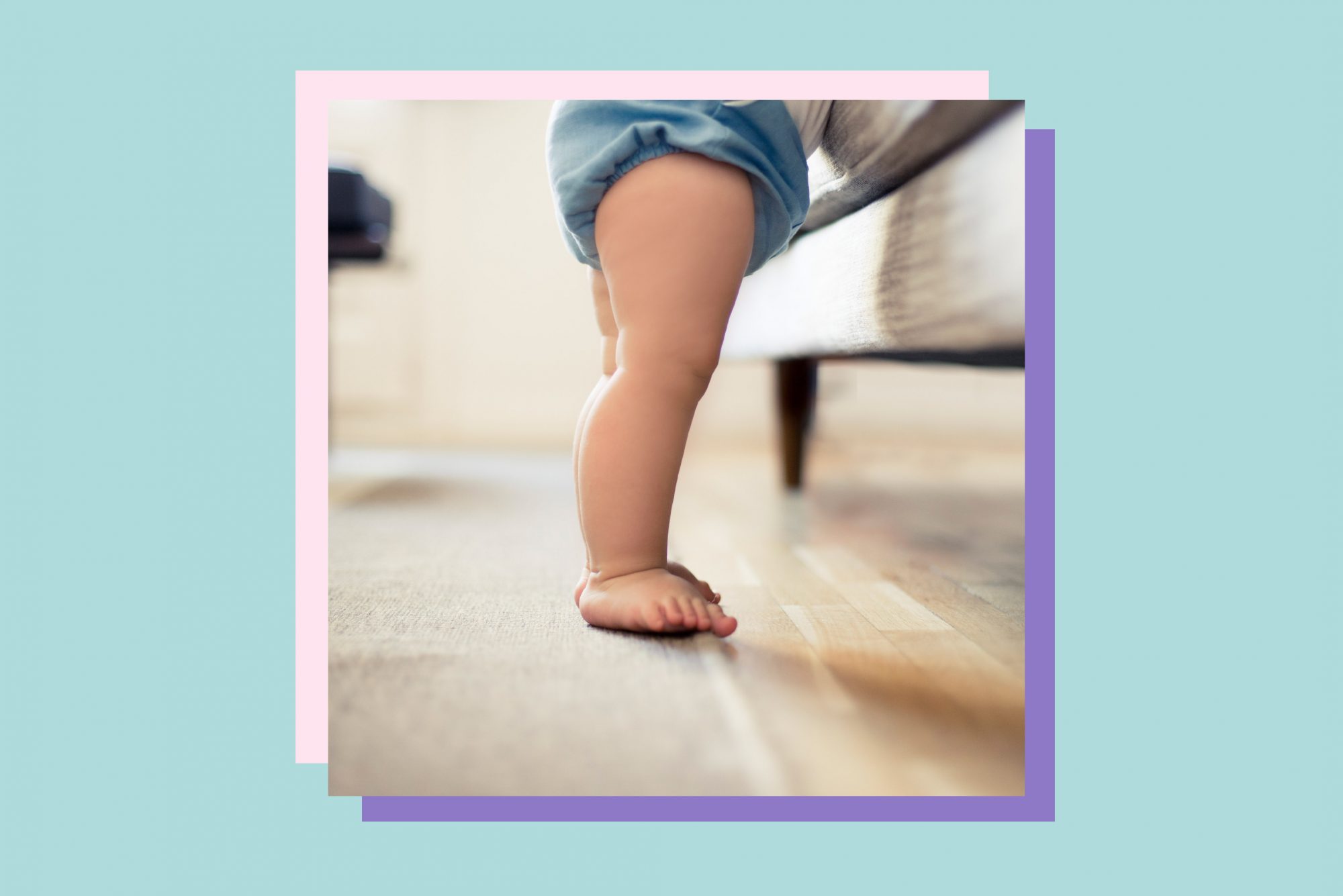
When we think of movement milestones, we tend to think of tummy time or baby's first steps. But preparing them for possible accidents, like falling, is essential as well, says a mom and pediatric physical therapist named KC who posts on Instagram under the name Milestones.and.Motherhood. She recently shared a reel on her account, illustrating how to teach your baby how to safely slide off of furniture.
"I know stairs and furniture safety can be intimidating," wrote the mom of two. "We often avoid it because the worry of an accident can be so overwhelming. But what if, instead, we started teaching our babies the safe way as soon as they're mobile? I promise, they will get it, and it'll be one less thing for us to worry about as parents! Because don't we have enough as it is."
She went on to say that as soon as your little one is "on the move, teach them to flip to their bellies and slide down off furniture. You can apply this to the stairs too, if it works for you!"
The key is to "repeat, repeat, repeat." "You'll be doing the majority of the work at first, but I promise, before you know it—they'll have that safety skill nailed down!" she concluded.
KC's followers applauded the advice. One mom wrote, "My son was completely fearless from 5 months, trying to launch himself off our bed headfirst and frequently trust falling from when he could climb and pull to stand. Since reading your advice I religiously started teaching him to slide onto his belly and now at 11 m.o., he automatically does it for every dismount!"
Another commenter shared, "Never would've thought to do this when they first start out. Wish I would've found your page 3 kiddos ago! But applying a lot of what you teach with my 4th."
Other experts tell Parents.com they're onboard with the technique, offering more detail and best practices.
Kristy Knox, a neurological physical therapist with UCHealth in Colorado Springs, Colorado, notes, "It helps to minimize the chance of head injuries and emphasizes safety and control, teaches young children how to safely move their body, and it gives them more independence and freedom."
Knox recommends you teach children to dismount "feet first, head high" as it will offer the best body control. "A baby's head is heavy in comparison to the rest of their body, and also oh so precious," she explans. "Keeping babies on their belly versus back allows them to use their arms to help control their movement."
And pediatrician Whitney Casares, M.D., M.P.H., FAAP, author of The Working Mom Blueprint: Winning at Parenting Without Losing Yourself, agrees that once kids have started maneuvering themselves on and off of furniture (or stairs), it's important to teach them how to safely lower themselves by going backwards. However, it's not necessary to teach young babies how to do this before they show interest themselves, she says.
You'll also want to be sure that the "landing site" is safe, notes Daniel Ganjian, M.D., pediatrician at Providence Saint John's Health Center in Santa Monica, California. "When children come off the furniture, they often topple over so be incredibly vigilant to ensure there are no sharp edges around that can inflict serious injury to your child," he says.
Dr. Casares adds a crucial point: "Parents should never leave a baby unattended on stairs or elevated surfaces and should child-proof entrances to stairs until children can independently walk up and down them."
Ultimately, kids are sponges, and as Dr. Ganjian points out, we often underestimate their abilities. With the right amount of supervision, this technique can be a wonderful way to support their growth and exploration while keeping them safe.
































